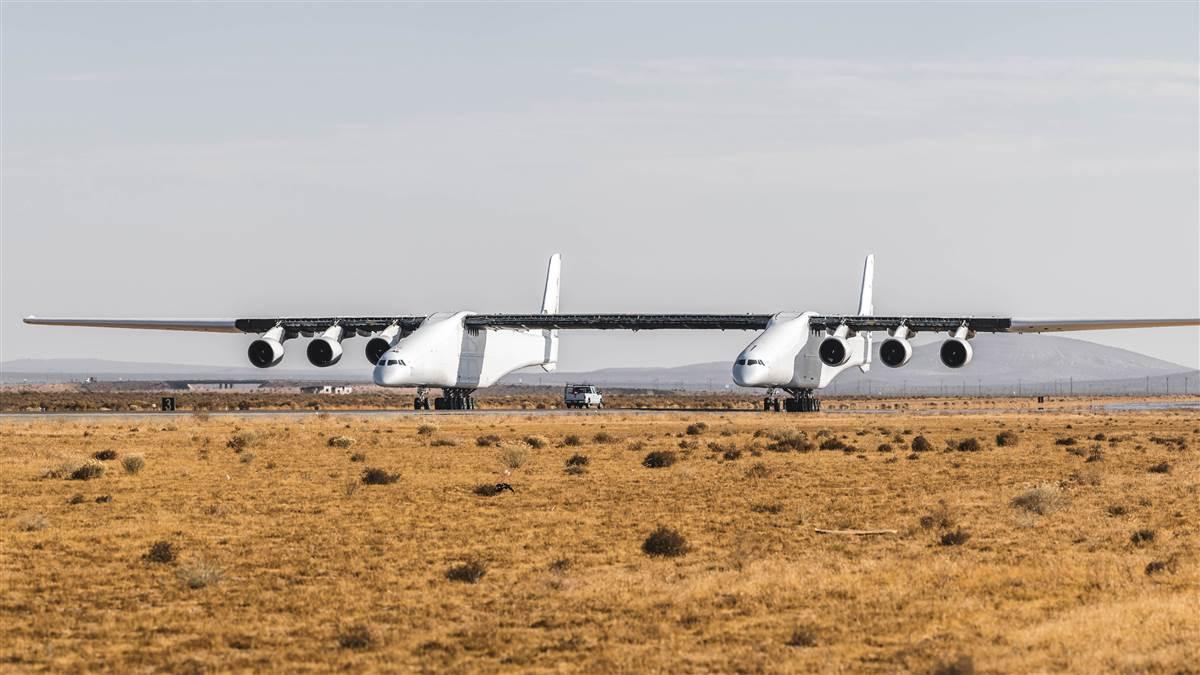Scaled Composites-designed Stratolaunch taxis
Immense mother ship passes initial rolling test
Stratolaunch, the world’s largest aircraft and the foundation vehicle for launching other craft into space orbit, successfully lumbered down a Mojave, California, taxiway under its own power Dec. 16.
The low-speed trial was “really interesting,” noted Scaled Composites project pilot Joe Sweat, who tested the aircraft’s nosewheel steering and braking input. “It was a lot less intimidating once we had it out there, in terms of how much runway we take up,” he explained in a news release.
A dual-fuselage design accommodates the flight crew in the right fuselage while flight data systems are housed in the left fuselage. The twins are joined in the middle by a reinforced center wing that provides lift, stability, and an attachment point for “multiple payloads with a combined maximum weight of more than 500,000 pounds.” A key goal of the program is to provide a low-Earth orbit (LEO) platform that is “capable of delivering payloads to multiple orbits and inclinations in a single mission.”
The massive ship boasts a 385-foot wingspan that is more than enough to contain the playing field of a professional football field, both end zones, and then some. Six Pratt & Whitney PW4056 jet engines, four of which are normally fitted under the wings of a Boeing 747, can lift the 1.3-million-pound-maximum-takeoff-weight space launcher into a LEO suitable to service space payloads.
An operational range of 2,000 nautical miles and an airport-style approach to launch services from a runway—instead of from a purpose-built spaceport—is said to add versatility and limit mission-scrubbing hazards of weather, airborne traffic, and heavy marine activity that may plague other types of space liftoffs.
Allen previously teamed up with Burt Rutan’s Scaled Composites to build and fly SpaceShipOne, the air-launch vehicle piloted by Mike Melvill and Brian Binnie that proved the concept of a reusable and privately funded spacecraft.
The philosophy driving the current project seeks “to help maximize the potential of space” and “improve life here on Earth,” according to Allen’s LinkedIn profile.
Allen’s enthusiasm for space began with Soviet cosmonaut Yuri Gagarin’s April 12, 1961, spaceflight, he explained on the social media website. “I went out to the front porch and stared up at the stars, trying to see his capsule overhead,” as Gagarin became the first human in space. Allen wrote that he “was enthralled by the idea of space exploration, and have been ever since.”
The entrepreneur added that he expected “fresh approaches” to tackle “hard challenges” but was “optimistic that Stratolaunch will yield transformative benefits—not only for scientists and space entrepreneurs, but for all of us.”
According to the project’s website, the goal for the space launch project is to become “fully operational by the end of this decade.”





